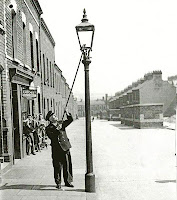I discovered this list and
thought it would make an interesting blog. Lots of stories from ancient times
describe incredible inventions, some purported to be real and others attributed
to magic and wizards. It's fair to say
that most of them are nothing more than fanciful tales with no relationship to
reality. However…when three separate
historians describe something, it wouldn't hurt to take a closer look. Some of these
inventions could come in handy in today's society.
1) FLEXIBLE
GLASS
One such story comes from the
reign of Emperor Tiberius Caesar and tells of a glassmaker who came to his
court with a drinking bowl. The Emperor threw it on the stone floor where it
merely bent rather than shattering. He had the man beheaded because he feared
the flexible glass would undermine the value of gold. Some speculate that this
tale presages the development of tempered glass, but even that doesn’t bend,
leaving the truth lost to the ages.
2) STARLITE
Some truly great inventions
came from unlikely sources which is how you’d explain Starlite. Jane's
International Defense Review contained the first announcement of Starlite, a
revolutionary insulation created by hobbyist Maurice Ward in the 1980s. Live TV
tests showed the material keeping an egg completely raw after 5 minutes of a
blow torch. Several noted scientists vouched for its incredible ability to
resist heat and impact. Unfortunately, Ward died in 2011 before sharing the
secret of Starlite to anyone and the material hasn't been seen since.
3) THE OGLE
CARBURETOR
Ever since the invention of
the automobile people have been looking for ways to improve fuel efficiency.
Most of them are worthless or scams (i.e., the dozens of "gasoline
pills"), but every so often one comes along that's more believable. In the
1970s, a man named Tom Ogle developed a new type of carburetor that pressurized
gasoline into a vapor and injected it into the firing chambers. After
installing it in his Ford Galaxie, the car got a verified 113 miles per gallon.
Unfortunately, Ogle died in 1981 before revealing the design of his carburetor.
4) SLOOT DIGITAL CODING SYSTEM
Here's a lost invention that's
very modern, one that fascinates data storage experts. In the late 1990s Romke
Jan Berhnard Sloot, a Dutch electronics technician, announced the development
of the Sloot Digital Coding System. He described it as a revolutionary advance
in data transmission that could reduce a feature-length movie down to a file
size of just 8KB. Sloot demonstrated this by playing 16 movies at the same time
from a 64KB chip. After getting a bunch of investors, he mysteriously died on
September 11, 1999, two days before he was scheduled to hand over the source
code.
5) WIRELESS
POWER TRANSMISSION
An entire book could have been
written about the inventions that Nikola Tesla took to the grave with him. One
such invention was the ability to distribute power wirelessly on a global
scale. Tesla had dazzled crowds with demonstrations of short-range wireless
power through the air, using coils to light the bulbs as far as 100 feet away
with no physical connection between the coil and the light bulbs. Tesla claimed
he had a significant upgrade on that technique that allowed for electricity to
be transmitted through the Earth’s atmosphere, using high-altitude receiving
stations. He began constructing a prototype in 1901 but funding fell through
and it was never completed.
6) GREEK FIRE
Warfare has always been a
driving force for the development of technology. Apparently we humans never
tire of coming up with faster and more painful ways to kill each other. In the
7th century, eastern Roman (Byzantine) emperors were purported to have deployed
an incendiary weapon exceptionally effective in naval warfare, as it could be
shot from siphon-like devices and continued to burn even when it came in
contact with water. The substance has come to be known as Greek fire, and although we've certainly invented other similar
weapons, the composition and manufacture of this one was such a closely-guarded
military secret that no records remain.
7) INCA
STONEWORK
Some lost technologies don't
seem all that impressive on the surface, but modern man still can't figure them
out. A good case in point is the stonemasonry of the ancient Inca people of
Peru. Working with huge, rough-hewn stones is extremely difficult especially
without modern machinery. But the fit of the blocks in Inca structures in
Macchu Picchu is so tight and precise that it's been said you couldn't fit a
razor blade between them. It's still unknown how the Incas of the time were
able to transport the massive stones—some weighing as much as 300,000
pounds—and place them with such precision.
8) SILPHIUM
This item is a plant rather
than an actual invention. It's what the
ancient Romans did with it that makes it notable. This member of the fennel
family grew wild in North Africa and was used as a primitive contraceptive,
with its leaves ground into a resin and used as a spermicide. The settlers of
the area quickly began exporting silphium in large quantities resulting in the
plant quickly being rendered extinct. To this day, we don’t know what in
silphium's biological makeup allowed it to serve as birth control.
9) TESLA DEATH
RAY
Another Nikola Tesla creation.
This one never saw the light of day. In the late 1930s, Tesla approached the
U.S. military with a proposal. He would
create a new style of weapon for them that could be fired great distances. The
exact blueprints for this weapon have never been revealed, but there are a
number of speculations. Some believe it might have been a primitive laser,
while others think it was an electrostatic generator that blasted microscopic
pellets of tungsten at intense force a distance of over 300 miles. Tesla’s
death device has since been lost forever.
Note: Nikola Tesla (1856-1943) refers to the engineer and inventor mentioned in items #5 and #9, not the electric car manufacturing company.












































